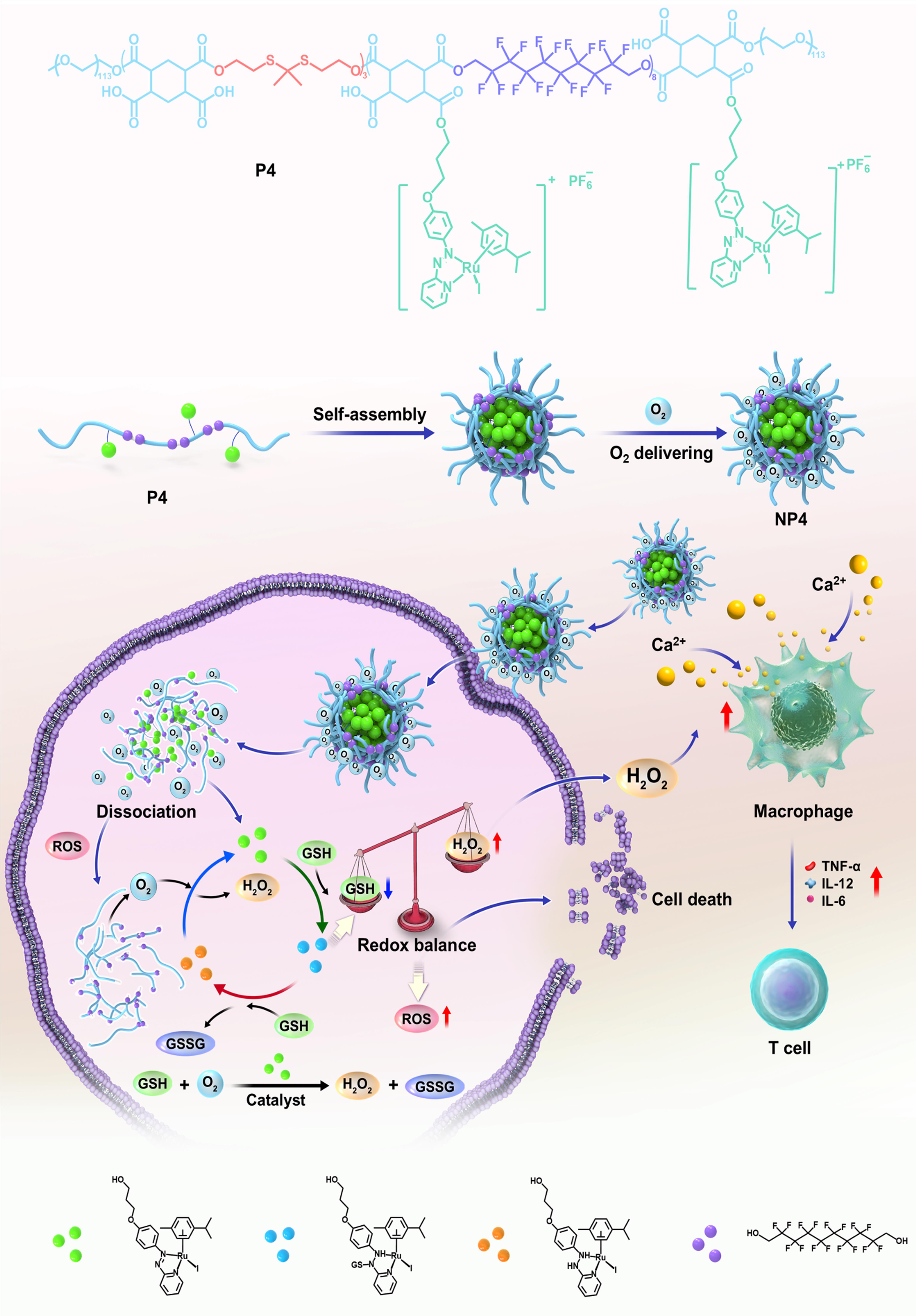A novel ruthenium-based nanocatalyst for the treatment of hypoxic osteosarcoma
Hanchen Zhang, Nicolás Montesdeoca, Dongsheng Tang, Ganghao Liang, Minhui Cui, Chun Xu, Lisa-Marie Servos, Tiejun Bing, Zisis Papadopoulos, Meifang Shen, Haihua Xiao, Yingjie Yu, Johannes Karges
Osteosarcoma generally suffer from an inadequate oxygen supply due to the rapid proliferation of cancer cells, incomplete vascularization, and uneven distribution. This results in oxygen-deprived areas within the tumor tissue. The hypoxic tumor microenvironment is considered one of the biggest obstacles for the development of anticancer drugs. To overcome these limitations, there is a need for the development of anticancer agents that can therapeutically intervene in hypoxic cancer cells.
In a recent study published in Nature Communications, a research group led by Professor Xiao Haihua at the Institute of Chemistry of the Chinese Academy of Sciences (ICCAS), Professor Yu Yingjie at the Beijing Laboratory of Biomedical Materials of Beijing University of Chemical Technology, and Professor Johannes Karges at the Faculty of Chemistry and Biochemistry of Ruhr-University Bochum developed a novel ruthenium-based nanocatalyst for the treatment of hypoxic osteosarcoma.
The researchers first designed a ruthenium (Ru) catalyst into polymeric nanoreactors for hypoxic anticancer therapy. The nanoreactors can catalyze the oxidation of glutathione (GSH) to glutathione disulfide (GSSG) in hypoxic cancer cells. This initiates the buildup of reactive oxygen species (ROS) and lipid peroxides, leading to the demise of cancer cells. It also stimulates the overexpression of the transient receptor potential melastatin 2 (TRPM2) ion channels, triggering macrophage activation, leading to a systemic immune response. Upon intravenous injection, the nanoreactors can systemically activate the immune system, and nearly fully eradicate an aggressive osteosarcoma tumor inside a mouse model.

文章链接:https://www.nature.com/articles/s41467-024-53646-y
